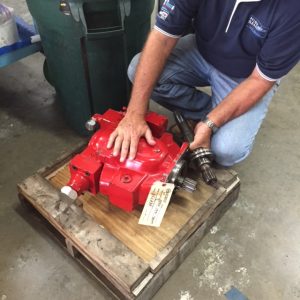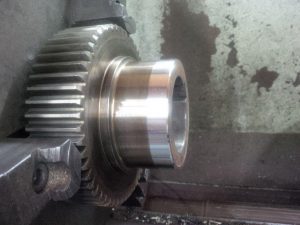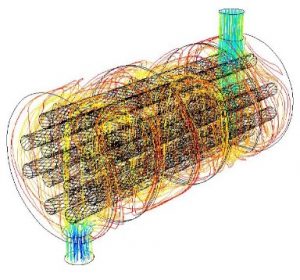 Our hydraulics team was recently contacted by a welding contractor at Lauderdale Marine Center to remove a PTO pump off a 150’ Palmer Johnson’s main hydraulics system so they could gain access to the ship to perform their work. What started as a fairly routine job quickly turned into something much more. The splines on the unit had seized, taking what would have been roughly a half day of work to several days.
Our hydraulics team was recently contacted by a welding contractor at Lauderdale Marine Center to remove a PTO pump off a 150’ Palmer Johnson’s main hydraulics system so they could gain access to the ship to perform their work. What started as a fairly routine job quickly turned into something much more. The splines on the unit had seized, taking what would have been roughly a half day of work to several days.
Typically, we would construct an A-frame rigging to hoist the PTO pump out of the boat but in this case, we were forced to cut the unit apart and remove it in pieces. Because of this, the ship now requires a whole new replacement unit. Once it was uncovered that the first PTO pump could not be removed using standard procedures, the ship’s engineer had us remove the second pump to check the splines. Fortunately, the second unit did not have the same problem.
We highly recommend removing, refurbishing and re-installing these PTO pumps every three years or so for routine maintenance. Just like the top-end of a windlass which should be removed, cleaned and re-installed with new grease ever couple of years; PTO pumps need to be serviced to ensure that they do not experience these types of problems with seizing.
A proactive approach to maintaining these critical components of your hydraulics systems will pay big dividends and potentially save thousands of dollars in the end.





 We then moved on to work on the entire hydraulic central system where we performed a full hydraulic fluid flush, cleaned and pressure tested the heat exchangers and changed all the filters.
We then moved on to work on the entire hydraulic central system where we performed a full hydraulic fluid flush, cleaned and pressure tested the heat exchangers and changed all the filters.
 This particular model was a shell and tube design. As its name implies, this type of heat exchanger consists of a shell (a large
This particular model was a shell and tube design. As its name implies, this type of heat exchanger consists of a shell (a large  We next disassembled and removed the hydraulic power unit (HPU). The HPU consists mainly of a pair of motors, a reservoir tank and a hydraulic pump. These units can generate a tremendous amount of power to drive most any kind of hydraulic ram. Hydraulic Power Units are based on Pascal’s law of physics, drawing their power from ratios of area and pressure. In this case, the HPU takes the commands from the helm to push the hydraulic rods in the right direction to steer the yacht. A failure of the hydraulic steering system at sea or just about anywhere could prove to be catastrophic.
We next disassembled and removed the hydraulic power unit (HPU). The HPU consists mainly of a pair of motors, a reservoir tank and a hydraulic pump. These units can generate a tremendous amount of power to drive most any kind of hydraulic ram. Hydraulic Power Units are based on Pascal’s law of physics, drawing their power from ratios of area and pressure. In this case, the HPU takes the commands from the helm to push the hydraulic rods in the right direction to steer the yacht. A failure of the hydraulic steering system at sea or just about anywhere could prove to be catastrophic. motors out for testing and tested all of the pumps to ensure they were in good working order. We also made all
motors out for testing and tested all of the pumps to ensure they were in good working order. We also made all